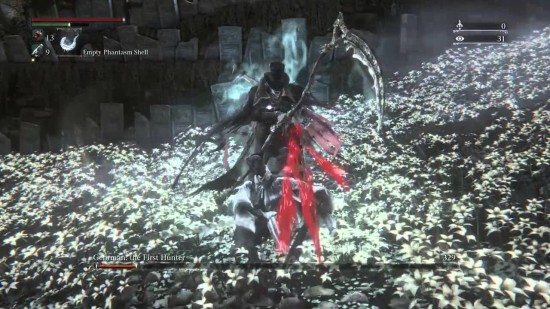

Might and Delight’s Shelter 2 is a beautiful and atmospheric survival game. A the sequel to the original Shelter in which you play as a mother badger protecting her cubs, Shelter 2 is a return to emotionally driven gameplay. According to Might and Delight’s website, their goal is “to create [an] interesting experience with a strong focus on well-crafted visual styles.” While they succeed in creating a unique game with an interesting visual style, the gameplay is tedious, sparse, and lacks guidance. Also, the original Shelter featured wildfires and predators and Shelter 2 offers little of that (and suffers for it).
Shelter 2 is light on story—you play as a mother lynx who must guide her cubs through the wilderness, protecting them from predators and ensuring that they get enough food and are not left behind. Because you can name the cubs when they’re born, you’re able to create a deeper bond with them. Naming them after your real-life beloved pets increases the emotional impact when one of them inevitably dies.
In time, your cubs grow up and begin to hunt on their own, eventually leaving you. In the end, you return to your original den and (presumably) die, with gameplay passing on to one of your cubs. Your new avatar finds a mate and the game continues. The ability to see your lynx’s family tree is a nice touch, as you’re able to see how far back the line goes from your original playthrough.
The ability to name your cubs in Shelter 2 adds some emotional investment but doesn’t make up for the limited amount of things to do.
However, beyond that, there’s not much to talk about. It’s natural that a game that puts you in the place of an animal wouldn’t feature a strong story, but the game lacks short-term goals—there’s no nighttime that requires shelter and there are no sacrifice on the part of the mother lynx. She won’t die if she isn’t fed, which that means hunting to feed the cubs is the only thing you really have to do. Hunt, move, hunt, move, and eventually return to your original den. Playing with your own challenges in mind, such as permadeath or having to eat every so often, can help and including those features in the game would really help increase motivation.
Because the game lacks urgency, everything feels shallow. You care about the kittens because they make adorable mewling noises when you call to them or because they have names; it’s sad that animals die in the wild, and this game reminds you of that. But more interaction (the ability to bathe, play with, or actively instruct your cubs) would help players become more invested in their adopted lynx babies.
Gameplay in Shelter 2 is really a letdown. The controls are frequently clunky, with the camera often getting stuck in aggravating positions or dipping down below the ground. Hunting isn’t necessarily difficult, but turning as quickly as your prey can be tricky, and there’s no stealth mechanic or any other method to offset the annoyance of repeatedly missing because you can’t turn quickly enough.
Much of Shelter 2 is spent walking, with little other interaction available.
Similarly, the game simply lacks direction. There’s no tutorial, which is fine, but the only instruction is a picture and a key to tell you what to do. Once you have the basics down (run, jump, hunt), you’re left to wander the wilderness and wonder if maybe you missed the part where they showed you which way you’re supposed to go. That’s acceptable, given that you’re supposed to be a lynx in the wild and not a human on a quest. But when the game is so open and features so few threats—in over two hours of gameplay, I encountered two wolf packs which were incredibly easy to outrun—it just feels aimless.
There is a collectible system to encourage exploration, but no real reason to do it. Sure, you can collect animal skulls, but why? It seems to have no impact on the game’s direction, and such a game-y activity feels out of place in Shelter 2, which generally eschews gameplay staples like collecting items. Wandering the wilderness as a lynx works, while activities like collecting plants, skulls, and minerals feel shoehorned in.
All is not lost in Shelter 2. The art style is unique, though it may not be to everybody’s liking. The world is comprised of sharp angles and strong, occasionally clashing patterns that call to mind a patchwork quilt. While this lends some texture to the ground, it’s definitely not photorealistic and relies heavily on being stylistic. The color schemes are nice and are often muted, making the world feel like it’s constantly in twilight. It’s very dreamlike and complements the art style, but if you’re looking for a realistic view of the world, you ought not to consult Shelter 2.
The patchwork style of Shelter 2‘s landscape is unique and memorable, even if the gameplay is wanting.
The soundtrack is also great, featuring moody, soothing music from Might and Delight’s partners Retro Family. It’s a great complement to the game’s atmosphere and lovely to listen to on its own.
The real draw of Shelter 2 is in the atmosphere created by the art and music while almost everything else feels like a step backward from the original game. The lack of engaging events and desperation combined with the clunky controls make the game feel like more trouble than it’s worth. It’s great from an atmosphere and art perspective, but the $15 price tag is just too high for the amount of enjoyment to be had here.
If you like the moodiness, art, and adorable lynx babies, Shelter 2 might be worth a purchase if it’s on sale, but don’t expect much.




 The Wolf Among Us: Episode 2 Walkthrough
The Wolf Among Us: Episode 2 Walkthrough Youre Either Alive, Dead, or a Woman in The Walking Dead
Youre Either Alive, Dead, or a Woman in The Walking Dead The Witcher 3: Wild Hunt Guide - How and Where to Get a Haircut
The Witcher 3: Wild Hunt Guide - How and Where to Get a Haircut Destiny How to: Path of the Striker and Defender Titan Subclass Quest
Destiny How to: Path of the Striker and Defender Titan Subclass Quest How to do Destiny Farming for Maximum Reputation, Tips and Tricks for PlayStation and Xbox
How to do Destiny Farming for Maximum Reputation, Tips and Tricks for PlayStation and Xbox